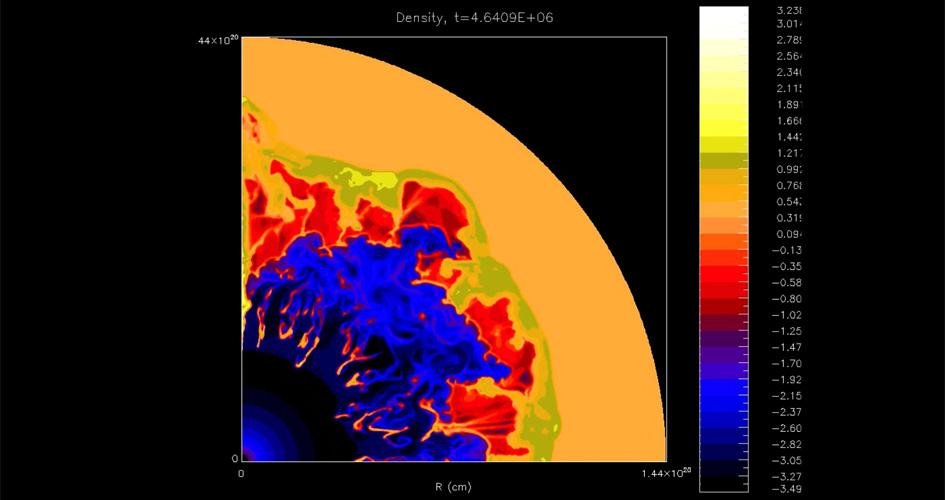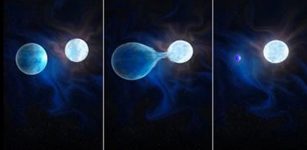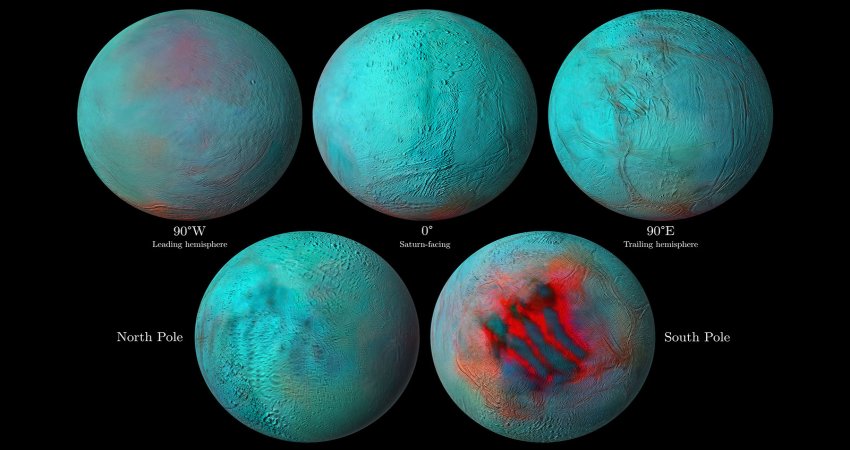Did Our Solar System Form In Wind-Blown Bubbles Around A Giant, Long-Dead Star?
MessageToEagle.com – Researchers from the University of Chicago suggest that our solar system could have formed in bubble around giant, long-dead star.
The general prevailing theory is that our solar system formed billions of years ago near a supernova.

This simulation shows how bubbles form over the course of 4.7 million years from the intense stellar winds off a massive star. UChicago scientists postulated how our own solar system could have formed in the dense shell of such a bubble. Courtesy of V. Dwarkadas & D. Rosenberg
But the new scenario instead begins with a giant type of star called a Wolf-Rayet star, which is more than 40 to 50 times the size of our own sun. They burn the hottest of all stars, producing tons of elements which are flung off the surface in an intense stellar wind.
When the Wolf-Rayet star sheds its mass, the stellar wind plows through the material that was around it, forming a bubble structure with a dense shell.
“The shell of such a bubble is a good place to produce stars,” because dust and gas become trapped inside where they can condense into stars, said co-author Nicolas Dauphas, professor in the Department of Geophysical Sciences.
It is believed that 1 percent to 16 percent of all sun-like stars could be formed in such stellar nurseries.
This new theory differs from the supernova hypothesis in order to make sense of two isotopes that occur in strange proportions in the early solar system, compared to the rest of the galaxy. Supernova event produces both isotopes, while earlier studies revealed that in the early solar system there was a lot of aluminium-26 but less of the isotope iron-60.
Wolf-Rayet stars, on the other hand, release lots of aluminium-26, but no iron-60.
“The idea is that aluminum-26 flung from the Wolf-Rayet star is carried outwards on grains of dust formed around the star. These grains have enough momentum to punch through one side of the shell, where they are mostly destroyed—trapping the aluminum inside the shell,” said Vikram Dwarkadas, also involved in the study.
“Eventually, part of the shell collapses inward, due to gravity, forming our solar system.”
The giant Wolf-Rayet star ended its life long ago, likely in a supernova explosion or a direct collapse to a black hole. A direct collapse to a black hole would produce little iron-60; if it was a supernova, the iron-60 created in the explosion may not have penetrated the bubble walls, or was distributed unequally.
Research is published in The Astrophysical Journal
MessageToEagle.com
Expand for references









